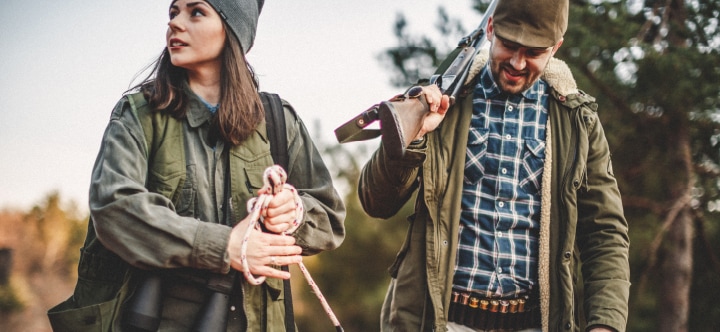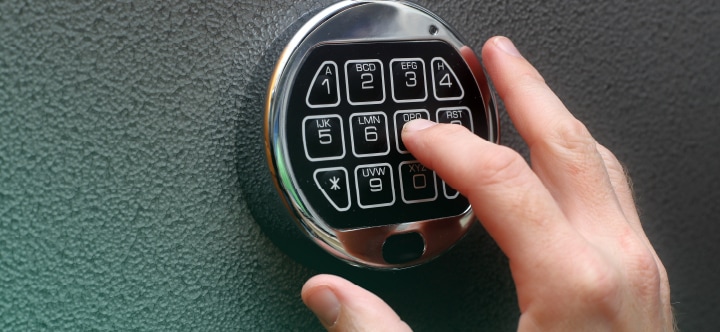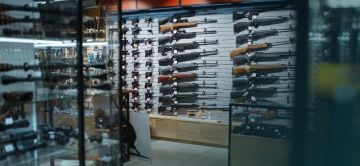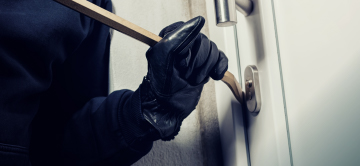Firearms
Taking action to reduce gun violence
From Public Safety Canada
Violent crime involving firearms is a growing threat to public safety in our communities. The Government of Canada is taking action. Be part of the solution. Together, we can help keep Canadians safe.
Gun violence is on the rise
We all have a role to play in making Canada safer
81%
Increase in violent offences involving guns since 2009Footnote 1
1 in 3
Homicides in Canada that are firearm-relatedFootnote 2
47%
Portion of Canadians who feel gun violence is a threat to their communityFootnote 3
All Canadians are affected by this issue
Gun violence impacts people and communities across Canada. It happens in urban, suburban, and rural communities. Across every province and territory. In all age and socio-economic groups. Among those who own guns and those who do not.
Some groups are disproportionately affected, including:
- women and girls
- visible minorities
- LGBTQ2 people
- children and youth
- lower income families
- those living in poverty
- people in Northern and remote communities
Taking on gun violence
Transcript
Video length: 30 seconds.
(Text appears in front of an empty city street)
TEXT ON SCREEN: Violent offences involving guns up 81% since 2009.
(An arrow as if in a graph moves upwards across the screen)
(A siren in the distance)
Gun violence has risen in recent years across Canada.
(The screen cuts to a country road, with the text in front of the image and a bar graph above the text that grows as the narrator speaks)
TEXT ON SCREEN: Shootings are now the most common form of homicide in Canada.
Shootings have become more common.
(The screen cuts to a suburban street with houses on either side. The text appears in front of the image and another bar graph appears to move along the street, growing in size)
TEXT ON SCREEN: 47% of Canadians feel gun violence is a threat to their community.
♪Intense music♪
Many Canadians feel threatened in their own communities.
(Intense music plays as a diverse range of Canadians appear in short clips one after another as follows:
- A man holding his child
- A woman riding in a car
- A couple laughing on a bench
- A father helping his son with homework
- A woman laying down
- A woman enjoying a steaming beverage
- A woman holding a baby
- Two older adults sitting at a table
- Two people laughing while looking at a phone
- A man sitting outside
- A man looking over a fence on a farm
- A man travelling on a boat beside a Newfoundland community
- A woman checking her phone on a busy downtown street
- A father using his computer with his daughter hugging him over his back
- A man talking with his teenage son)
The Government of Canada is taking action
to help keep Canadians safe
by banning assault-style firearms,
strengthening gun control laws,
and targeting gang violence
and illegal firearms trafficking.
TEXT ON SCREEN: Be part of the solution. Learn more at Canada.ca/firearms
By working together, we can reduce gun violence.
(Canada wordmark)
We are taking action in key areas
Gun laws and enforcement
We are strengthening Canada’s gun laws with legislation that prioritizes public safety and effective police work, while respecting law-abiding firearms owners. Changes to the Criminal Code and Firearms act impact background checks, transfer and transport.
We are supporting law enforcement with initiatives to reduce and prevent violent crime across Canada.
Smuggling and trafficking
We are securing our border and taking measures to help prevent firearms from coming into Canada illegally and ending up in the hands of criminals.
The Initiative to Take Action Against Gun and Gang Violence is funding the Canadian Border Services Agency to stop cross-border smuggling as well as the RCMP to enhance the Integrated Criminal Firearms Initiative.
Assault-style firearms
We are limiting access to assault-style firearms that can and have been used in deadly shootings. One Canadian killed by gun violence is one too many. Many models have been classified as prohibited under the Criminal Code in the ban that took effect May 1, 2020.
Gun and gang violence
We are investing in prevention, enforcement, intelligence and border security efforts to tackle the increase in gun related violence and gang activity. We are working with agencies and departments in provinces and territories, and coordinating national and international efforts.
What you can do to help keep our communities safe
Understand the ban and amnesty
Get the latest information for gun owners about the new prohibition on certain firearms and devices.
Store your firearms safely and securely
Prevent accidents and deter theft by properly storing, transporting, and displaying firearms.
Report a public safety concern about firearms
If your concern is urgent or life threatening, call 911 or your local police emergency number.
Why has Canada banned assault-style firearms?
The ban was put in place to limit access to the most common assault-style firearms in Canada. These guns are designed for military use and can be used to injure or kill a large number of people quickly. The significant risk these firearms pose to public safety outweighs any justification for their continued use and availability in Canada.
The ban will freeze the Canadian market for these firearms, reduce the number and availability of assault-style firearms and lower the possibility of these firearms being sold into the illegal market. The ban took effect May 1, 2020.
See the full list of prohibited firearms and devices
What can you do with a newly banned firearm?
The Government of Canada has launched the Assault-Style Firearms Compensation Program for businesses, to offer fair compensation to businesses for the cost of the impacted firearms, devices, and eligible components they have in their inventories, and any eligible costs related to participation in the program.
Firearm owners will be contacted when the Assault-Style Firearms Compensation Program for individual owners is ready to launch.
If you are the lawful owner of a banned firearm, an Amnesty Order protects you from criminal liability while you take steps to comply with the law. The amnesty period is in effect until October 30, 2025.
Learn more about the Assault-Style Firearms Compensation Program.
How guns can be diverted and end up in violent crime
Straw purchasing
Legally purchased guns sold illegally on the black market.
Theft
Legally or illegally owned firearms stolen and used.
Smuggling and trafficking
Firearms entering the country and being distributed illegally.
What is straw purchasing and why does it matter?
Straw purchasing is when a firearm license-holder legally buys a gun and then illegally resells it on the black market. It is against the law and it contributes to gun violence by putting firearms in the wrong hands. Straw purchasers may not be involved in other crimes themselves, but the firearms they sell are used in all types of crime, including shootings, robberies, home invasions and murders.
Smuggling firearms and straw purchasing is illegal and you could face criminal charges if you are involved.
Additional firearms resources
Firearms regulations
Criminal Code regulations on prohibited or restricted firearms and other weapons.
Firearms Act
Requirements for licensing, transport, storage, display, shooting and more.
Gun licensing
Requirements for firearms licenses for individuals and businesses.
Gun registration
Firearm registration requirements for restricted and prohibited firearms.
Gender-based violence
Information and support services for those affected by gender-based violence.
Crime Prevention Funding Programs
Programs to prevent and reduce offending among those most at-risk.
Firearms safety courses
Introductory safety courses for non-restricted and restricted firearms.
Firearm legislation for safer communities
Legislation that provides practical steps to help keep Canadians safe.
Types of guns
Information on non-restricted, restricted and prohibited firearms.









